Chris Baty's Blog, page 95
October 4, 2018
What does NaNoWriMo mean to you?This year, as we’re looking back...
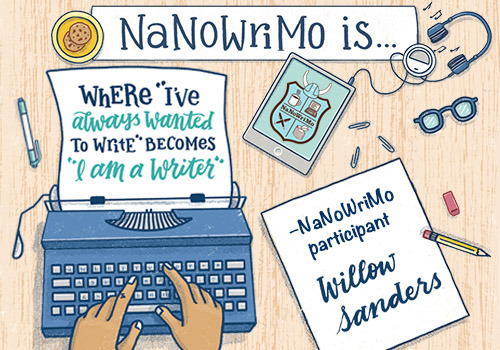
What does NaNoWriMo mean to you?
This year, as we’re looking back at NaNoWriMo’s past and forward to our future, we’ve asked writers to tell us what our writing programs and community mean to you! We’ll be sharing some of our favorite answers throughout the fall.
“NaNoWriMo is… where ‘I’ve always wanted to write’ becomes ‘I am a writer.”
–NaNoWriMo participant Willow Sanders
October 3, 2018
Journal Boarding for Your Novel
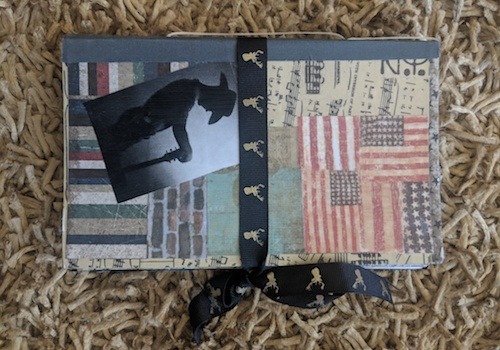
As we dive into
NaNo Prep season
, we’ve talked to some participants to get the inside scoop on how to best prepare for November. Today, NaNoWriMo participant Poppy Dubois
shares how to create a “journal board” for your work in progress:
I’m here to explain journal boarding. Oh, you’ve never heard of journal boarding, you say? I guess that’s not very surprising, considering it’s a term I made up. That’s right, I’m part-writer, part-trendsetter. But I digress.
I tend to be a pantser. I don’t like outlining, mainly because I’m not organized, partially because I’m lazy, but also because I don’t like being trapped to confines. I like to go where the story and where my characters take me. Usually, if I have a planned path, my characters come in and are all, “You think that’s where we’re going? No way! We’re doing this!”
So, while I had character bios and a general idea of where the story was heading, the middle of the book lay wide open. No path. No map. No idea.
Enter journal boarding. When I’m not writing (or watching reality TV) I’m crafting. My latest passion is making journals. And I thought to myself one day: Self, what if instead of buying every notebook in stock at Target, you make one? But not just any old notebook: a notebook specially crafted to the overall theme of your story. Fit the idea. Make it fun so every time you write notes, you’re looking at the pictures that keep you in the story. And what if you use fun paper to make you happy? It’s like a vision board, but also a notebook!
My response: SELF! YOU’RE BRILLIANT!
Yes, I yell at myself often.
While some people may think that creating a notebook takes time away from the actual writing (they’d be right, because I’m a terrible procrastinator!) it actually helps me get into the mindset of the story. I start by either going to a craft store or looking through my selection of themed papers for the inside. I like to use patterned paper so the theme is consistent throughout. The cover is the fun part. I use images, textures, sparkles, whatever medium I can think of to convey the overall focus.
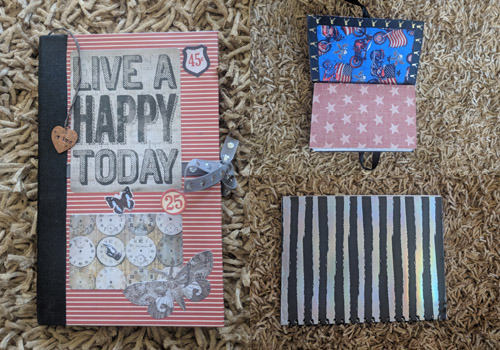
This is weird and abstract right? Okay, I’ll use a more solid example. In my novel Untarnishing Her Cowboy, the male main character is a cowboy from rural Wyoming who moved to Nashville with a buddy to make music. That, and the band name Whiskey Chaser, were all the facts I had when I started thinking about this novel.
I started making my journal: Cowboys. Rugged. Tough. He plays music. He’s a good ol’ boy. He rides a motorcycle. I found images which conveyed those ideas. I found paper which appeared worn and rustic. Stars, stripes. American flags. Music notes. Brick walls. Dirty, tarnished looking paper. Subdued colors.
I have less intricate journals too. The red and white striped notebook is for a time travel western I am doing. It still has the same subdued and dirty colors because it’s a western. But, it has mystical and time elements throughout. And, of course the word “traveler”. It’s okay to be obvious sometimes.
I’m in the very beginning process of a YA time travel book as well. I plan on using lots of drawings and pictures to build my world, so I used the larger spiral notebook format and plain paper so I had more room for world building. The covers are shiny, ethereal, mystical.
You don’t even have to build a notebook from scratch like I do. You can purchase plain ones and just cover them with drawings, pictures, magazine cutouts or whatever you find. The point of it is creating something tangible so every time you write, draw or jot down notes, you’re looking and thinking about your story.

Poppy Dubois has a million story ideas swirling around in her brain, and tries to actually write them down when she’s not being super lazy. When she’s not writing, crafting, moming, or watching TV, she is a criminal defense attorney.
October 2, 2018
Fantastic Stories and Where to Find Them

As we’re prepping for November this year, we’ve talked to some participants to get their stories about how NaNoWriMo has influenced them. Today, NaNoWriMo participant Justine Dietz shares how she finds inspiration for her stories:
In my experience, one of the more difficult stages of writing is when you have that fascinating idea for a full length story, or even new ideas to add to that story to make it more interesting, when suddenly you encounter that famous “writer’s block” and your story seems repetitive, without any innovative or new, interesting elements.
Getting an idea in the first place took the longest for me. I used to sit around thinking about what I liked to talk about, or what kind of “world message” I wanted to get down on paper or document in the form of a fictional story. But perhaps those thoughts were the most considerable contributions to the writer’s block I had in the first place. It’s like when you’re looking for a word that is on the tip of your tongue, but the more you try and catch it, the more you become frustrated, and the less you are actually likely to recover it… until one day, when you are not even thinking about it, it suddenly comes to you.
In a way, story ideas work in a similar fashion, at least from what I’ve learned. They come to you spontaneously. However, there are different ways in which you might be able to encourage these sparks of ideas without blocking your creativity. Here are some things I found quite helpful:
1. Go outside.Take a walk down your local street, take in the scenery. Can you imagine some sort of story taking place there? A romantic story, perhaps? Or a short horror novella? Anything is possible! Also remember to always have something with you to write everything down!
2. Listen to Music.Listen to music that evokes specific emotions and don’t even think about trying to find something. Just close your eyes and imagine a scene taking place. If the scene sounds interesting enough, write it down! A story can derive from a simple two-liner that’s going to end up somewhere in those pages (or not)!
3. Read.Don’t deprive yourself of reading other books or watching media. They can spark character ideas, landscape ideas, and can make you think of story arcs that you feel are missing in the original – you can write it! Personally, a few original story ideas sparked through the writing of fanfiction. However, you are going to want to be careful if story ideas stem from other works. Being inspired by them is beautiful and amazing, but you’re going to want to only be inspired by them, and not outright plagiarize them. Ask yourself this: Are my characters and settings my own or are they simple copies of another author’s characters? Is my story something new and innovative or a simple reflection of a story that’s already out there?
4. Don’t think.Open your eyes to look around you, take in everything. A simple color, phrase, or event can spark an idea. Let your emotions flow. Many times, it is during times of distress or sorrow or extreme happiness that words just pop up.
5. Don’t stop.Don’t stop at that one idea. Keep working on it. Your ideas will get better and unravel more often. Years ago I’d need a whole year to come up with one idea, now I get a couple a month!
In conclusion: Go outside, open your eyes, and let you mind wander, don’t force it into a box. You’ll find something. Don’t stress out about it, you can do it!

Justine Dietz is a third year University student studying English Literature and Visual Culture. She is a radio show host, musician, artist, poet, writer, and YouTuber. She has over twenty novels in the work with plans to publish two of them in the near future. Her favorite genres are young adult, fantasy and coming-of-age.
Top photo by Jess Watters on Unsplash.
October 1, 2018
Road Trip to NaNo: Writing in a Place of Wonder

NaNoWriMo is an international event, and we’re taking a Road Trip to NaNo to hear about the stories being written every year in our hundreds of participating regions. Today, Devona Jackson, Municipal Liaison for the Asia :: Cambodia region, shares how her region has shaped her writing:
Cambodia: the Kingdom of Wonder. The nickname has always stuck out in my mind during the last four years I’ve lived in this country. A place of mystery, rich culture, and heritage, but also of heartbreak and despair.
This is a place of pure beauty that’s been torn apart by war, and now is slowly starting to pick up the pieces. It has taken many years of repair in order to restore the natural beauty that I see today among the rice fields, beautiful architecture, and historical monuments. Even though most of the writers in my region are stationed in Phnom Penh, we all have the ability to work together to achieve a great purpose, to write dangerously in a place that we call home.
After spending nearly four years in this country, I have learned many things, about life and about writing. First of all, a picture is worth not a thousand words, but millions… it really does tell a story. For instance, this past week, my brother was in Cambodia for the first time since my relocation here for work, and I had the chance to take him around where I used to live and where I live now. I started out with Angkor Wat and other temples within the Angkor complex, and he was able to snap pictures, and I was able to transform those into stories that we delved right into. We saw the majestic, and the poverty-stricken. He has been able to truly see what I see every day. He heard stories that were meant to be recorded and documented for others to read.
One of the things I’ve learned through living here is that in order to be successful in writing, start small. Don’t overdo it. I started learning about Cambodia over the course of a few years before actually living here. I learned about the culture, the history, and everything else, and even though my quest for learning is not completely over, I am still seeing things with new eyes. With writing, I start small. As I am planning things, I break things down into small pieces and start thinking about how I want to approach this task, and what it takes to get there. There are so many things to consider—character development, climatic events, discovering problems—but these are things you can tackle if you start one piece at a time.

With the good, there will always come the bad, and this applies to writing as well as life. We are all going to have bad writing days, and encounter writer’s block. Something that I always tell myself is, “Better days are ahead, just keep pushing.” With this photo of a sign at the Toul Sleng Genocide Museum here in Phnom Penh, that commemorates the death of nearly 20,000 innocent Cambodian people during the Khmer Rouge era, it’s true that better days are ahead for the Cambodian people as well.
As writers, we may have a day where we can’t write anything, and that is okay. All we can do is keep on fighting and have courage to complete the task of writing 50,000 words. The Kingdom of Cambodia fought for their lives, all we have to do is fight to complete that dream of writing a book. Cambodia’s NaNo team is learning to write dangerously in the Kingdom of Wonder.

Dr. Devona Jackson leads NaNo in the Asia :: Cambodia region. She identifies as a creative-writing genius, but a noob as a ML, and has participated in NaNo since last year. Originally from Minneapolis, Minnesota, USA, Devona moved to Cambodia in 2014 to continue her career as a education consultant for Cambodia Job Foundation after spending ten years in the ESL Education sector. Devona graduated in 2016 with her Ph.D in Education Policy and Leadership from the University of Minnesota.
September 28, 2018
4 Proven “Hacks” for Winning NaNoWriMo
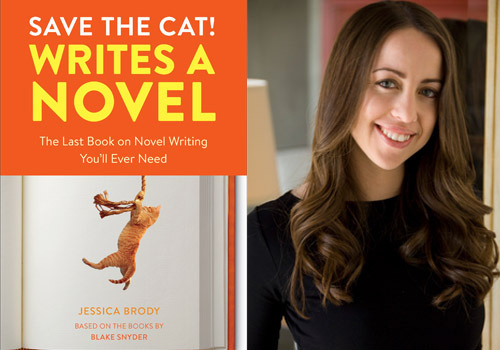
As we dive into
NaNo Prep season
, we’ve talked to some participants to get the inside scoop on how to best prepare for November. Today,
Jessica Brody, author of
Save the Cat! Writes a Novel
, shares how to set yourself up for success by creating a morning writing routine:
I’m ALL about the hacks! Get the most done in the least amount of time. Life hacks, writing hacks, productivity hacks, I’ve got them all. In fact, when people ask me how I’m able to write four books a year, I have one word for them: HACKS!
And so I’ve decided to apply my “hacking skills” to my favorite writing event of the year: NaNoWriMo. Because let’s face it, when you write four books a year (over 300,000 annual words), every day of your life is pretty much a NaNoWriMo.
So, here are some hacks that I use to write 50,000 words in one month:
1. Don’t look back and don’t edit.Yes, it’s hard. Yes, your inner perfectionist will always want to peek back at what you wrote yesterday and start tinkering it to death. RESIST! NaNoWriMo is all about forward momentum. Which means you can’t look back. You can’t edit. You have to keep your inner perfectionist bound and gagged in the closet.
Yes, your writing is going to be bad. Like really bad. But guess what? That’s not your problem. That’s Future You’s problem. Future You is the author who suddenly appears and sits down in your chair on December 1st. And Future You is amazing at editing crappy writing. It’s their only job! Your job is to write as much as you can in 30 days. So, do your job and let Future You do their job.
2. Keep an ongoing list of edits and revisions.But what if I come up with something brilliant that happens earlier in the novel? Can’t I just got back really quickly and change it?
NO!
Because essentially changing means deleting and deleting means fewer words. And then, you’re moving backward instead of moving forward. But, of course, you don’t want to forget that brilliant idea, so keep an active list of changes and revisions you want to make on hand at all times. Either in a word document, notebook, Evernote, or a list-making app. (I like Trello.)
Write down all your brilliant ideas for the things you want to change. Then once you’ve finished the messy, crappy first draft of the novel on November 30, Future You has a nice tidy to-do list ready for them to use! (Future You loves nice, tidy to-do lists.)
3. Use bullet points to get through tricky scenes.Not all scenes or chapters come to us fully formed, with witty dialogue, striking metaphors, beautiful prose, and perfect structure. Wouldn’t that be nice?
Sometimes (especially when we’re racing to finish a 50,000-word novel in 30 days), scenes or ideas come to us in chunky, choppy bits and pieces. A dialogue exchange here, a nice description there, a sentence or two about how the character is feeling, etc. In order to keep your momentum going and not let these tricky scenes slow you down, I recommend using bullet points to get your ideas down quickly.
For instance, you could quickly draft out a scene that looks like this:
And, then, you simply KEEP GOING! The idea is down on paper. You won’t forget it. Now, you can move on and keep the forward momentum going.
4. Outline the key “beats” of your story before November!The best way to stay on track writing a novel in 30 days, is to… you know, actually have a track to stay on.
My best advice is to start with an outline. Not a full 200-page, chapter-by-chapter outline. Start with the key “story beats”. These are the same beats found in every great story ever told.
Like the Catalyst (the thing that pushes your character into action), the Break into Act 2 (what your character decides to do about the Catalyst), the Midpoint (the twist or turning point that sends the story in a new direction), and the All is Lost (the lowest point of your novel that will eventually motivate your character to change.)
I use the Save the Cat! plotting method to outline all of my novels. But regardless of what you use, laying out the key story beats first, before you start writing, will help keep you on track, on target, and motivated to write every single day.
If you want find out more about the Save the Cat! method, and read examples of the key story beats found in popular novels, download my FREE “Save the Cat! Starter Kit” here.
You can also check out my book, Save the Cat! Writes a Novel which releases on October 9, 2018.
Good luck, Wrimos!
Limited Time Special Pre-Order Offer:
Pre-order a copy of Save the Cat! Writes a Novel and receive a FREE companion eBook containing bonus beat sheets (plot breakdowns) for 10 popular novels. That’s over 120 pages of extra content to help you plot your own bestseller.
Since Jessica Brody started using the Save the Cat! method, she has sold more than 17 novels to major publishers like Simon and Schuster, Random House, and Macmillan. Now, Jessica is the author of several novels for teens, tweens, and adults. Jessica’s books have been translated and published in over 23 countries, and two are currently in development as major motion pictures. She lives with her husband and three dogs near Portland, OR. Visit her online at: JessicaBrody.com, Follow her on Twitter @JessicaBrody, or on Instagram @JessicaBrody
September 26, 2018
How I Discovered NaNoWriMo

As we’re starting to prep for November this year, we’ve talked to some participants to get their stories about how NaNoWriMo has influenced them. Today, NaNoWriMo participant Jessica Madden shares how she discovered the NaNoWriMo writing challenge and community:
I discovered NaNoWriMo in the funniest way. I worked on this novel idea I had in November 2011. I had no idea what this writing event was. Nor did I have any idea that I had just participated in it until NaNoWriMo was over. Throughout the month of November, a friend of mine kept posting about her word count for the day on Facebook, but I had no idea why she was posting it on her status. I wrote my novel within three weeks, and when the month was over I decided to find out what this writing event was all about.
Disappointed that the event was over, I looked forward to taking part in what I thought was a clever challenge the next year—only I didn’t participate in 2012. I was busy at the time and didn’t think I could write 50,000 words in a month. In 2015 I tried to take part in it but didn’t end up doing so. I felt like I wasn’t ready to challenge myself. At the time I was dealing with some self-doubt, as well as dealing with writer’s block due to some personal things that had been happening, and quickly told myself I would never reach 50,000 words.
It wasn’t until 2017 that I finally convinced myself to take part in the challenge. I started off with Camp NaNoWriMo, but didn’t take it serious enough, still dealing with self-doubt. I thought maybe I wasn’t ready for NaNoWriMo after all—until I met author Jack Heath during an author event at the Sydney Writer’s Festival I volunteer for. He spoke to school kids on how this writing event was a great way of challenging yourself. His words got me thinking.
“If these authors could do it, then you can do this too.”It wasn’t until Halloween when an agent tweeted about three successful authors she represents who had participated in NaNoWriMo and had written 50,000 words during the challenge. She said if these authors could do it, then you can do this too. As soon as I saw the post, an idea sparked and I started working on my idea, which was a Peter Pan retelling that I had been wanting to do for a long time. With little time to prepare for the story, I pushed myself for twenty-nine days to write, sharing my idea with others who gave me suggestions when I wasn’t sure what to write. Some people thought I was crazy when I told them about NaNoWriMo, especially with the word count goal I must reach each day to finish on time. I surprised myself with the effort I put into this project.
Now NaNoWriMo has become an addiction for me where I must take part in it, and if I’m not able to write I might end up losing my mind. During the non-NaNoWriMo months I set my own word count goals to meet each day to help prepare for November. I’m looking forward to this coming November and I plan to write the novel I was supposed to write back in 2015.

Jessica Madden was born and raised in Sydney, Australia. She began writing stories at the age of eight. When she was nine she realize that she wanted to be a writer more than anything in the world. Her best known work on Wattpad is her young adult novel Silent Love, which was published last year. Her fourth YA novel, Chasing The Storm, has been published recently.
Top photo by Aaron Burden on Unsplash.
September 24, 2018
Road Trip to NaNo: Writing Is a Way of Life
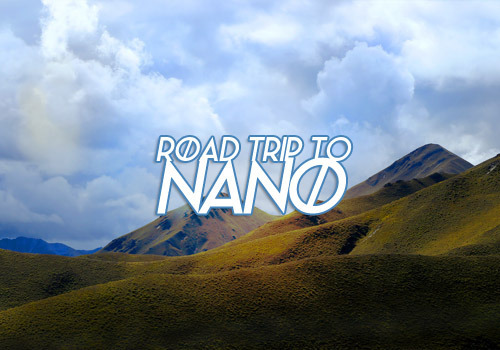
NaNoWriMo is an international event, and we’re taking a Road Trip to NaNo to hear about the stories being written every year in our hundreds of participating regions. Today, Judy L Mohr, Municipal Liaison for the New Zealand :: Christchurch region, shares how her region has shaped her writing:
The writing community in Christchurch, New Zealand is strong, with a long history of writers giving us a legacy we cherish. With New Zealand’s top crime novel award dedicated to Ngaio Marsh, and children’s playgrounds filled with Margaret Mahy’s imagination, we Christchurch writers are surrounded by inspiration. The Pacific Ocean is on one side and the Southern Alps are on the other. The real Middle Earth is only a short drive away.
There is one common theme that runs strongly through the Christchurch writing community: writing is a way of life.
Many writers surface after the long winter in November (it’s currently spring here) to enjoy the many events coordinated throughout the city. Those of us who have been writing for many years encourage new writers to make the NaNoWriMo season mean something more than “You wrote 50,000 words.”
50,000 words in 30 days: it’s only 1,667 words a day. However, every year, there is at least one writer in my region who starts at midnight on November 1st and hits that 50,000 words before lunch. There are others who write 50,000 words within three days. I kid you not. The ones involved are typically university students heading into exams just as NaNoWriMo starts; they want to get NaNoWriMo out of the way, so they can focus on their studies. However, I believe that people who are fixated on word counts are missing the point behind events like NaNaWriMo.
While you need to reach 50,000 words to win the official NaNoWriMo challenge, the true challenge is to create a habit of writing—to make writing a way of life.
The idea behind NaNoWriMo is to write a little bit each day. Some days, you’ll be on a winning streak, unable to stop, fingers flying across the keyboard or the pen whizzing across the paper. Other days, you’ll be lucky if you manage to write a single paragraph. Whether it’s a good or bad writing day, the fact that you wrote something is what counts. By writing every day, you’re forming a habit.
“The true challenge is to create a habit of writing—to make writing a way of life.“According to psychologists, it takes anywhere between 21 to 66 days to form a habit. November has 30 days. So, you might need to keep writing in December to properly form that writing habit. Is that really such a bad thing?
Sometimes, finding time to write is the biggest challenge. Most of us are on the constant go. However, if you examine the little time-filling habits you have, I bet you’ll find plenty of opportunities to sit down and write—even if it is for a paragraph or two. And remember that you don’t need to write on a computer.
I carry a notebook everywhere I go, jotting ideas down whenever I can. When I’m driving, out comes the dictaphone app on my phone as I work out the nuances of the scene playing in my head. When my husband is watching TV, I’ve got the notebook out, writing more. I’ll read over passages while eating breakfast or lunch, and at night, before I fall asleep, I think about my stories, so my dreams can add the little spice that my story needed.
Every year, I give the same advice to those taking part in NaNoWriMo: don’t be focused on word counts; use the month to develop a habit of writing that you’ll be able to carry on with come next month—and the month after that.
Like many of us in Christchurch, New Zealand, turn writing into a way of life.
NaNoWriMo in New Zealand :: ChristchurchChristchurch writers know the importance of food and coffee while writing; however, there is always one Task Master about keeping an eye on our progress.
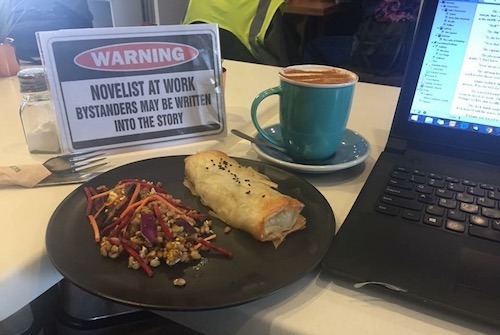

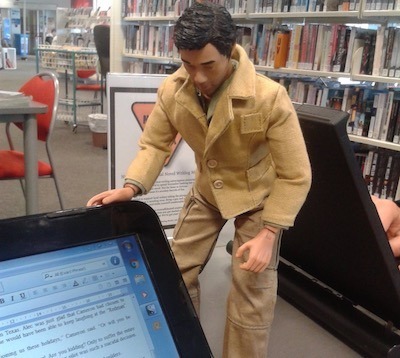

Judy L Mohr (a co-Municipal Liaison for Christchurch, New Zealand since 2015) writes thrillers, fantasy, science fiction, and non-fiction. She is also a freelance editor with Black Wolf Editorial Services, working on projects from writers around the world. When she isn’t writing, editing, or doing something for writing within the local community, she is hosting her own radio show about science, ConvoScience. You can follow her crazy adventures on her blog (judylmohr.com) or on Twitter (@JudyLMohr).
Top photo by Nareeta Martin on Unsplash, with added text.
September 21, 2018
10 Things I Wish I Could Tell My 15-Year-Old Writer Self

As we’re starting to gear up for NaNoWriMo this year, we’ve talked to some participants to get the inside scoop on how to best prepare for November. Today, NaNoWriMo participant Justine Dietz shares 10 tips she wishes she could have shared with her younger writing self:
I can’t stress this enough. Have fun writing! Forcing yourself to do something you should love ends up becoming frustrating. The writing gets worse and you won’t want to write anymore. Take time off! You’ll get back into it after a pause with a clearer and a healthier state of mind.
2. It’s okay to move on and come back to it later.I was always scared about abandoning my writing projects. But that’s completely fine! Your mind needs variety, or you’ll feel over-saturated and burnt out. Soon enough you’ll want to write again, and before you know it, you’ll be writing more and better than ever!
3. Story ideas will come to you!Forcing yourself to get those breathtaking ideas will not lead you to any—trust me, I used to worry so much about original ideas but never got anywhere worrying. Ideas will come to you, but when you least expect them. And while waiting, fanfiction is actually a great idea!
4. It’s okay to write fanfiction!Fanfiction is an amazing opportunity to learn better writing. You get straight into the story and you simply add your own elements, until one day perhaps you write your whole own story from scratch! In any case, it doesn’t matter what you write, what’s important is that you write.
5. Your writing will get better.When I look back to my first drafts of my first novel project I cringe, cry, and laugh at how badly it is written. Good writing only comes with practice and a lot of reading, especially in the general genre that you’re writing in.
6. Join NaNoWriMo!When I first found out about NaNoWriMo, I thought it was for published authors, for adults who ‘knew what they were doing’. On the contrary, NaNoWriMo is for everyone, at any stage of life, from anywhere in the world. You’ll be surprised at how many write-in events take place in your vicinity! It’s the perfect place to make friends and be supported and therefore be really productive!
7. It’s okay to ask for help.Problems? Plot-holes? You’re not alone. Especially when doing NaNoWriMo, there are so many people and forums out there that can assist you. Or you can even simply just ask a friend. Two brains are better than one. The more, the merrier!
8. Beta readers can be daunting, but they are worth it.Odds are, your friends and family won’t bash your chapters. But do keep in mind that you’re not looking for appreciation, but for honesty. Beta readers will help you notice plot-holes or inconsistencies you’ve overlooked and generally help you make your story as best as it can be.
9. Don’t be afraid to press delete.I was and still am much of a 'word hoarder’. I can’t get myself to delete anything. But don’t be afraid to! I cut what I don’t want into another document so as to look back on the story’s history while being able to continue without hindrance the actual story. If it’s the word count that keeps you from getting it out, read on!
10. Don’t stress out too much over your word count.Numbers have the power to take over your mind, and once you believe you’re even the slightest bit behind, it seems easier to just give up. So forget about the word count. You should be writing because you enjoy it, not because you want to write 50,000 words, right? It’s when you don’t care about the numbers that you suddenly reach 100,000 words without realizing it.

Justine Dietz is a third year University student studying English Literature and Visual Culture. She is a radio show host, musician, artist, poet, writer, and YouTuber. She has over twenty novels in the work with plans to publish two of them in the near future. Her favorite genres are young adult, fantasy and coming-of-age.
Top photo by Kinga Cichewicz on Unsplash.
September 19, 2018
How to Create a Morning Writing Routine for NaNoWriMo
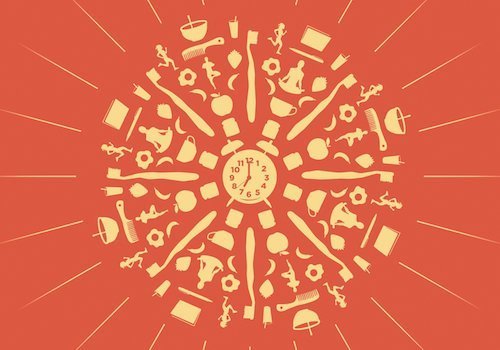
As we dive into
NaNo Prep season
, we’ve talked to some participants to get the inside scoop on how to best prepare for November. Today,
Benjamin Spall, co-author of
My Morning Routine: How Successful People Start Every Day Inspired
, shares how to set yourself up for success by creating a morning writing routine:
The surest path to success during NaNoWriMo comes in the little things you do every day. When all is said and done, succeeding at NaNoWriMo requires you to create a daily writing routine—and stick with it.
Opinion varies on when you should write, but I’m here to advocate for a morning writing routine. Over the past five years, I have interviewed over three-hundred successful individuals about their morning routines, including many famous writers, authors, and even NaNoWriMo’s own Grant Faulkner.
During this time, and while writing my book full of exclusive interviews and advice on how to get started with a morning routine, my co-author and I began to notice some clear trends surrounding how the most productive and successful writers spend their first few morning hours.
Here is what we’ve learned about creating a morning writing routine.
1. Write before checking email and social media.Have you ever noticed how effortless it is write when you’re in the zone? This feeling often comes when we’re already writing—when we’re churning out words like nobody’s business. Conversely, have you ever noticed how difficult it can sometimes be to get started?
Improve your chances of getting in the zone quicker by writing before you check your email and social media notifications. Give your novel the respect it deserves and do your most important work first. As author Ryan Holiday told me in an interview, “I have one other simple rule: Do one thing in the morning before checking email. It could be showering, it could be going for a long run, it could be jotting some thoughts down in my journal. It’s usually writing.”
2. Remove all distractions.Your email inbox and social media accounts are distractions to your morning writing routine, but so is just about every other app on your smartphone, and every website you can access from your computer.
Set up content blockers on your computer and phone. There are many free and paid services available that can do this for you, including SelfControl, Freedom, and Focus. Next, look at your desk. If it’s full of distractions that are not related to your writing, remove them. If necessary, write outside of your home, so you’re not tempted to procrastinate by tidying up around the house or making yourself an early lunch…
3. Get a good night’s sleep.When I asked Arianna Huffington about her morning routine she surprised me by wanting to talk primarily about sleep. She told me that 95 percent of the time she gets eight hours of sleep a night—but it’s not always been this way. About ten years ago Arianna had a painful wakeup call when she fainted from sleep deprivation and exhaustion. She was burning the candle at both ends, and as a result she vowed to start prioritizing sleep above all else.
In order to get the most out of your morning writing routine, you need to make sure you’re getting enough sleep the night before. It’s that simple. Get the sleep you need to fuel your creativity the next day.
4. Write even when you’re not writing.Just because you’re not physically writing your novel outside of your morning writing routine, this doesn’t mean you’re not writing.
When I caught up with author and artist Austin Kleon he let me in on the magic of his daily walks: “Almost every single morning, rain or shine, my wife and I load our two sons into a red double stroller and we take a three-mile walk around our neighborhood… It’s when ideas are born, when we make plans, when we spot suburban wildlife, when we rant about politics, when we exorcise our demons.”
While Austin isn’t sitting down at his desk during this time, it’s hard to argue that he’s not working on his craft. Write when you’re not writing by thinking about your novel when you’re at the gym, walking the dog, or doing anything else throughout your day. And if an especially good idea comes to you, be sure to write it down before it slips away.

Benjamin Spall is the co-author of My Morning Routine: How Successful People Start Every Day Inspired, and the founding editor of mymorningroutine.com.
September 17, 2018
Road Trip to NaNo: Finding the Seeds of Your Story
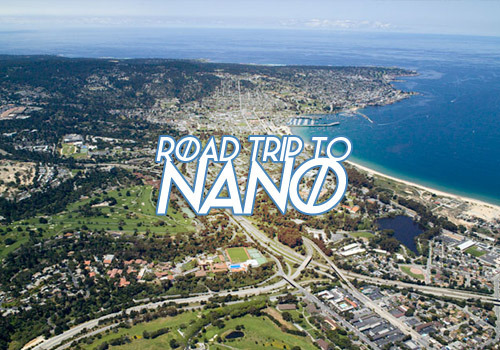
NaNoWriMo is an international event, and we’re taking a Road Trip to NaNo to hear about the stories being written every year in our hundreds of participating regions. Today, Al Stegall, Municipal Liaison for the USA :: California :: Monterey region, shares how his region has shaped his writing:
People arriving in Monterey are awestruck the majestic scenery. I get stuck behind them every day. Traffic screeches to a halt when tourists round the giant sand dune and behold our sapphire blue bay, sandy beaches, mast-filled marina, and sun-speckled windows peeking out from the cypress-covered peninsula. It’s particularly bad on weekends.
Monterey County’s coastline has inspired artists of all stripes, including many wordsmiths. Views of scenic Point Lobos inspired Robert Louis Stevenson’s Treasure Island. Carmel’s art colony attracted many, including Sinclair Lewis, Upton Sinclair, Jack London, and Langston Hughes. Robinson Jeffers’ Tor House and Hawk Tower still stand in Carmel. Jack Kerouac wrote Big Sur while living in Bixby Canyon. The hometown writer of greatest acclaim is John Steinbeck, who set many of his novels in Monterey County.
At first glance, Steinbeck’s description of Cannery Row seems at odds with the traffic-stopping vistas—seriously, people?—and idealistic postcard panoramas:
“Cannery Row in Monterey in California is a poem, a stink, a grating noise, a quality of light, a tone, a habit, a nostalgia, a dream. Cannery Row is the gathered and scattered, tin and iron and rust and splintered wood, chipped pavement and weedy lots and junk heaps, sardine canneries of corrugated iron, honky tonks, restaurants and whore houses, and little crowded groceries, and laboratories and flophouses.”
― John Steinbeck, Cannery Row
One might argue the disparity results from time and gentrification. The commercial canneries packed up and were replaced by a world-class aquarium and haute cuisine. In some ways, the proverbial tides have turned, yet look deeper you’ll still find the heart of Steinbeck’s description.
Where workers once splashed sardine remnants, tourists now litter the shores with wrappers, and receipts, and abandoned aquarium maps. The local fishing industry has felt the not-so-subtle pinch of marine legislation. Prostitution still abounds, though in lieu of bordellos, high-class consorts are transported in when millionaires flock to the peninsula in their Lamborghinis, Ferraris, Bentleys (and any other make imaginable).
Less than a mile away from multi-million dollar mansions of Pebble Beach, a vibrant homeless community still thrives. Like Doris (name changed), who spends her days scouring the public library internet studying the decimation of bee populations while at night she’s roused from public benches by Monterey’s finest. Undocumented kitchen workers dash out of Carmel, hoping to avoid prowling police and impound fees while those same cops free an uber-wealthy drunk driver so he can make his morning flight.
My view of Monterey may sound cynical, but it is in these layers we find story seeds. Cultivated, they bring our settings and our characters to life, adding texture and heart. As you prepare for November, scour your setting and characters for these tensions. Hunt out your quirks and warts, then place them as obstacles to your protagonist’s goals. This creates organic conflict that will drive your story and draw in readers.
Monterey really is beautiful. Please, come visit, but remember, the speed limit on Highway 1 is 65 mph. If you want to take in that view by the sand dune, here’s a little-known secret: there’s a cliff you can access by foot. There, you may sit and watch as long as your heart desires. If you’re lucky, maybe you’ll meet one of our colorful locals there.
NaNoWriMo in USA :: California :: Monterey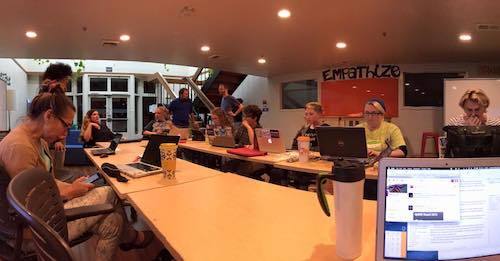



Al Stegall returns to NaNoWriMo in 2018 for his fifteenth year. He has been the ML of Monterey since the region was founded in 2005. In addition to writing, he’s a husband, a father, and a very small cog in the military industrial complex. Al is a US Army veteran and erstwhile intelligence analyst. He’s used his Korean language skills to avoid arrest on two different continents, but fell short of brokering peace on the Korean peninsula. He’s managed a fish prison and jockeyed police cars. Somewhere along the way he managed to pick up an MBA and a Masters in Biblical Studies. His novella ÜberVern: Defender of the Multiverse won 3rd Place in the 2016 International Three Day Novel Contest.
Chris Baty's Blog
- Chris Baty's profile
- 63 followers



